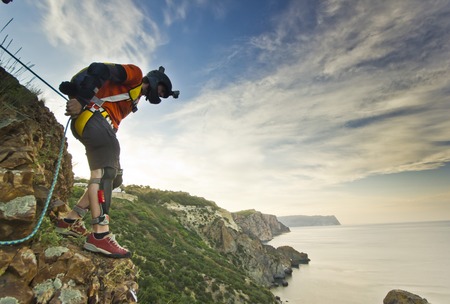Understanding the British Countryside
The British countryside is a tapestry of rolling hills, ancient woodlands, and patchwork fields, offering families countless opportunities for safe and enjoyable walks. One of the most distinctive aspects of walking in the UK is its extensive network of public rights of way. These paths, which include footpaths, bridleways, and permissive routes, traverse both rural and semi-urban areas, allowing walkers to explore landscapes that are often centuries old. Footpaths are reserved for pedestrians and frequently pass through farmland or alongside hedgerows, while bridleways can be used by walkers, horse riders, and cyclists. Permissive routes are tracks where landowners have granted public access, though this access can sometimes be withdrawn. Understanding these different types of pathways—and respecting their individual rules—is essential for parents and guardians planning family walks. The countryside also features iconic stiles, kissing gates, and signposts marked with coloured arrows or symbols to guide your journey. Navigating these unique features safely not only ensures a more enjoyable experience but also helps maintain good relations with local landowners and fellow walkers.
2. Staying Prepared: What to Pack
When venturing out for a family walk in the UK, being properly equipped is essential due to the famously unpredictable weather and diverse landscapes. Whether you’re exploring a local woodland, coastal path, or a national park, it pays to be prepared for all eventualities.
Essential Gear Checklist
| Item | Purpose | UK-specific Tip |
|---|---|---|
| Waterproof Jackets | Protection from rain and wind | Opt for breathable materials; pack for every family member |
| Sturdy Footwear | Support and grip on muddy or rocky paths | Wellies are great for little ones; walking boots for adults |
| Daypack (Rucksack) | Carrying supplies comfortably | Avoid overpacking; consider one with rain cover |
| Map & Compass / Ordnance Survey App | Navigation and safety | Mobile signal can be patchy—have a paper backup |
| First Aid Kit | Treat minor scrapes and stings | Add plasters, antihistamine cream, and tick remover tool |
| Torch (Flashlight) | Low visibility or unexpected delays | Headlamps keep hands free for supervising children |
| Packed Bin Bags | Sitting on wet grass / rubbish collection | Keeps the countryside tidy; doubles as emergency poncho! |
| Sun Cream & Hats | Protection from UV rays (even on cloudy days) | The British sun can surprise you—don’t get caught out! |
| Reusable Water Bottles & Flasks of Tea/Coffee | Hydration and warmth on the go | Brew up before leaving; nothing beats a cuppa outdoors! |
Clothing: Dress in Layers
The classic British advice of “dress in layers” is invaluable. Start with a moisture-wicking base layer, add an insulating mid-layer (like fleece), and top it off with a waterproof outer shell. Children tend to cool down quickly when resting, so keep hats, gloves, and spare socks handy year-round.
Snacks for Energy and Comfort
Packing hearty snacks keeps spirits high during longer walks. Favourites include:
- Sliced apples or bananas (easy to eat on the go)
- Cereal bars or flapjacks (classic British energy boosters)
- Packed sandwiches (cheese & pickle is always popular)
- Pepperami sticks or mini pork pies (for savoury cravings)
- A thermos of hot chocolate or soup (especially in cooler months)
Packing Practicalities: Top Tips for Families
- Let children carry their own small backpack with light essentials—it builds independence and responsibility.
- Always check the local weather forecast before setting out and adjust your kit accordingly.
- If walking with a buggy or pram, choose routes marked as “pushchair friendly” and ensure wheels are suitable for rough tracks.
With thoughtful preparation, British family walks can be enjoyed in comfort whatever the weather throws at you. A little extra planning goes a long way towards keeping everyone safe, dry, and happy along the journey.

3. Keeping the Family Safe on the Walk
Ensuring everyone’s safety during a family walk in the British countryside is paramount, especially when children are involved. Supervision should always be attentive and proactive; young children can be unpredictable, particularly when excited by open spaces or new surroundings. It’s wise to assign an adult or older child to keep an eye on younger walkers, ensuring they don’t stray from the group. If you’re walking with several children, using a buddy system can help each child feel responsible and looked after.
Animal awareness is another essential aspect of countryside safety. The UK’s public footpaths often pass through farmland populated by livestock such as sheep, cows, and horses. Teach children to appreciate these animals from a respectful distance—never attempt to feed or approach them, and always close gates behind you. If you encounter dogs on your walk, remind the family not to run or shout, as this can startle both dogs and their owners. For families bringing their own pets along, keeping them on a lead is vital to prevent any unintended incidents with wildlife or other walkers.
Staying on marked paths isn’t just about protecting fragile landscapes—it’s also a matter of personal safety. Many British walks traverse private land where straying from designated routes could mean encountering hazards such as uneven ground, hidden ponds, or even farm machinery. Encourage children to follow waymarkers and explain that sticking to the path helps preserve both nature and relationships with local landowners. Using maps or guide apps can make it more engaging for younger members of the group, turning navigation into part of the adventure while reinforcing good habits for future outings.
4. Navigating the Elements
British weather is famously unpredictable, and being prepared for all conditions is essential when heading out on a family walk. Before you set off, always check the latest weather forecast from trusted sources like the Met Office. Pay attention not only to rain or sun but also to wind speeds and temperature changes, which can be especially relevant in open countryside or coastal areas.
Understanding Risks: Mud, Bogs, and Beyond
The British landscape offers stunning scenery but is also home to muddy paths, boggy moors, and slippery slopes—particularly after rainfall. These hazards can catch out even experienced walkers. Equip everyone with sturdy, waterproof footwear and consider gaiters for particularly wet routes. Teach children to recognise areas that look deceptively solid but may actually be waterlogged or unstable.
Common Weather Risks on British Walks
| Risk | How to Prepare | What to Do if Caught Out |
|---|---|---|
| Mud & Slippery Paths | Wear boots with good grip; bring spare socks. | Slow down; avoid steep banks; help each other across tricky patches. |
| Bogs & Waterlogged Areas | Stick to marked paths; carry a walking stick for testing ground ahead. | Backtrack if necessary; avoid letting children wander off-path. |
| Sudden Downpours | Packed waterproofs; keep electronics in dry bags. | Shelter under trees (if safe); wait out heavy rain before continuing. |
| High Winds | Avoid exposed ridges; check wind warnings before setting off. | Find lower ground quickly; keep hats and loose items secured. |
Responding to Sudden Changes in Conditions
If the weather turns unexpectedly—say a sunny sky gives way to a sharp shower or thick mist—it’s important not to panic. Reassure the children, pause for a snack break under shelter, and reassess your route if needed. Always have an emergency plan: know where the nearest safe exit points are and carry a charged mobile phone with emergency numbers saved. Remember, it’s perfectly acceptable to cut a walk short if conditions become unsafe—safety should always come first on any British family outing.
5. Respecting Nature and Local Communities
One of the joys of walking in the British countryside is experiencing its rich natural beauty and vibrant local culture. However, it’s essential to treat these environments with care and respect, especially when you’re out with children. Practising good habits ensures that everyone can enjoy these spaces for generations to come.
Best Practices for Leaving No Trace
Always take your rubbish home with you. Even biodegradable items like fruit peels can harm wildlife or disrupt local ecosystems. Teach children to appreciate the ‘leave no trace’ principle by packing snacks in reusable containers and using designated bins where available. Encourage them to pick up after themselves and others, turning it into a learning opportunity about environmental responsibility.
Being Mindful of Local Customs
The UK’s network of footpaths often crosses working farms, private land, and small villages. It’s important to be considerate: close gates behind you to prevent livestock from straying, keep dogs under control (and on leads near animals), and stick to marked paths. Remind your family to greet locals with a friendly “hello” or “good morning”—a simple gesture that goes a long way in rural communities.
Using Stiles, Gates, and Public Spaces Responsibly
Stiles and gates are common features on British walks, especially in the countryside. Show children how to use them carefully—close gates securely and avoid climbing over fences or walls, which can damage property or disturb livestock. When passing through villages or using public facilities like picnic areas, be respectful of noise levels and other users. By modelling these behaviours, you foster a sense of stewardship and respect for both nature and the people who live there.
6. Useful British Resources and Emergency Contacts
Before setting out on a family walk in the UK, it’s wise to familiarise yourself with local resources and emergency contacts. Having these tools at your fingertips ensures you’re prepared for any eventuality, from sudden changes in weather to unexpected minor mishaps.
Key Local Apps for Walkers
OS Maps: The Ordnance Survey’s official app provides detailed mapping of footpaths, bridleways, and public rights of way across Britain. It’s an invaluable companion for planning routes and staying oriented.
What3words: Used widely by UK emergency services, this app assigns every 3m x 3m square in the world a unique three-word address. Perfect for pinpointing your exact location if you need help.
Met Office Weather: For up-to-date and accurate local weather forecasts – essential in the famously changeable British climate.
Essential Organisations
Mountain Rescue England and Wales/Scottish Mountain Rescue: These volunteer teams are experts in helping lost or injured walkers. Know their contact details if heading into hilly or remote areas.
The Ramblers: This walking charity offers route advice, safety tips, and campaigns for access to walking paths. Their website is a treasure trove for families exploring the countryside.
National Trust & Forestry England: Both organisations manage many family-friendly trails and sites, often with on-site staff able to assist or advise in case of minor emergencies.
Emergency Numbers Every Parent Should Know
General Emergencies
999: For police, ambulance, fire brigade, or mountain/coastguard rescue. Use this number only for genuine emergencies.
Non-Emergency Assistance
101: Non-urgent police enquiries.
111: NHS non-emergency medical advice (available 24/7).
Tops Tips Before You Go
- Add emergency numbers as contacts in your phone before leaving home.
- Ensure your mobile is fully charged and consider carrying a power bank.
- If using location apps like What3words, familiarise children with how they work.
The right preparation and knowledge of local resources can make all the difference. By equipping yourself with these tools, you’re helping ensure that British family walks remain safe, enjoyable adventures for everyone involved.


